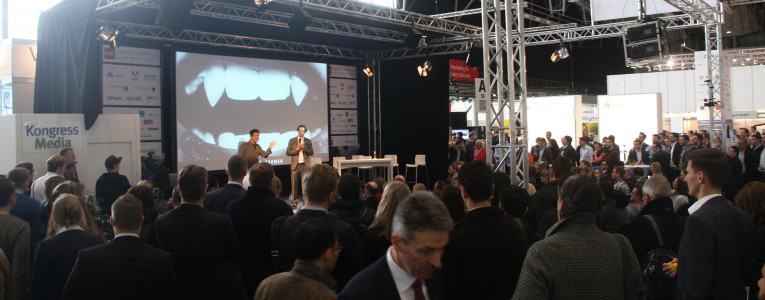The Paris edition of the Enterprise Digital Summit is coming together for next month. Bjoern posted recently on the conference’s key themes with some great links to ideas around platforms, the elastic enterprise and machine learning, but he also talks about the company’s operating model and operating system, and that triggered some thoughts around terminology that connected with conversations I had with Dave Gray two weeks back (and last year!), and that connected with conversations I had with Sigurd Rinde this week (and over the years). Connections in context over time.
I have a problem with talking about the “Operating System” for the organization. I realise that in dealing with the new digital landscape and new business models, our organizations need to change. Dramatically (but we know change is really difficult). Traditional hierarchies and command and control just aren’t effective any more. Management isn’t working! White collar workers in the typical business seem to be busier and less productive than before. How can we fix that? What is the solution? If it’s upgrading the organization to a new Operating System then that feels like an industrial, command and control based solution to the problem. It’s thinking of the the new paradigm in terms of a kernel and drivers, connecting hardware and software, to be tested and debugged. It’s like thinking of the brain as just an electrical circuit. A collection of 90 billion neurons, each one connected to a thousand others, passing electrical signals. But that brain supports the mind which thinks and feels and imagines and has subjective thoughts. More than just electrical circuits. We need to think organic rather than mechanic or engineering.
Now to Dave Gray. As well as his soon to be published Liminal Thinking book that I blogged about last week, Dave has work in progress following on from Alex Osterwalder’s Business Model Generation and Value Proposition Design books, with his Culture Mapping sessions – I recommend you take a look at his thinking on this. When Dave talks about this, or does a workshop, he often says that culture is like the Operating System of the company, but then he usually goes on to talk about changing and nurturing it in terms of gardening (explained here). In his talks he’ll often quote Louis Gerstner, from one of Agile Elephant’s favourite books (Who Says Elephants Can’t Dance? – from 2002 – it’s part of the reason behind for our name):
“Until I came to IBM, I probably would have told you that culture was just one among several important elements in any organization’s makeup and success — along with vision, strategy, marketing, financials, and the like… I came to see, in my time at IBM, that culture isn’t just one aspect of the game, it is the game. In the end, an organization is nothing more than the collective capacity of its people to create value.”
Although Dave uses operating system as shorthand, I prefer his more organic explanation and definitely agree with his focus on organzational culture.
There is plenty of talk about how the traditional hierarchy of most organizations is reaching its limits. There is talk of flattening the management structure and self organising and we reference companies like W. L. Gore, Valve Corporation (Steam) and Semco Partners. These are great examples, but I worry over the way some people talk about these and Holacracy without fully understanding the scale of the rules and methodologies that underpin it. I hear people discussing Frederick Laloux’s Reinventing Organizations book and the pursuit of the Teal Organization. My concern is over being too prescriptive with our solutions. At Agile Elephant we believe there are no “one size fits all solutions”. Every organization is different and at a different stage of evolution in the new digital landscape, and so we believe there needs to be more focus on the activities and behaviours and characteristics that work, rather than striving for a particular system that might.
That leads me to my Enterprise Irregular buddy Sigurd Rinde and discussions which will result in a series of posts including this one. In our catch up call this week we talked about where the classic organization is, and where the modern organization needs to be. He told me how positively people respond when he talks about white collar productivity and tells them (in words which I stole and used above):
“Management isn’t working!”
In our conversation he added more names to the list of companies that aren’t using a traditional hierarchy like Patagonia, Buurtzog, Handelsbanken and Zappos. Then we talked about Zappos and his discussions with them and their problems in changing to Holacracy. However, the most powerful thing we talked about is how organizations spend too much time thinking efficiency when they should be thinking effectiveness. Business is all about getting the work done and the work is a flow. Most of our organiations have vertical application silos – ERP, CRM, Email, HR, Document Management and more. Then we are adding enterprise social networks like Jive, or extra collaboration tools like Slack. The digital workplace is getting more complex.
Sig talks in language that we Elephants like. He talks about getting the work done as value creation. This core purpose generates a sequence of activities – a flow. Like water it requires a framework to be useful. Now there are three basic ways you can move water around:
- In pipes – that’s the industrial approach, creating a complex system of flows with fixed connections, joints and valves, and more pipes to connect to the next system – like too much of the business application software we use.
- In buckets passed hand to hand – how much of our day to day work feels like that, with work slopping over the edges on to the floor and not getting to where it needs to be?
- Along a riverbed – water finds its path – there may be rocks, branches and obstructions that change the flow, but water finds its way around them, and we can work on the riverbed to remove the obstructions, or the river banks to shorten the course.
So when it comes to looking at company organizations at the Enterprise Digital Summit Paris, I’d prefer us to be thinking in organic rather than machine terms. I want us to be thinking about the things that work rather than the particular system deployed. Above all I want us to be thinking about frameworks and that riverbed and how we can make the value flow more effectively.
photos courtesy of Kongress Media and Sigurd Rinde


